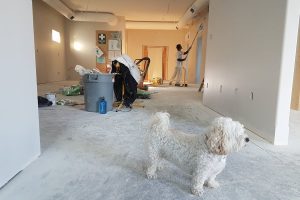5 Common Electrical Defects At Home

Electricity is one of the most important facilities in modern homes. Along with its convenience, various risks and problems arise as big issues. When a homeowner is faced with electrical problems, they are confronted with a number of risks and hazards.
They have to deal with complicated cables, dangerous circuits, and the fear of being left in the dark. It can be difficult to diagnose electrical problems at home, due to the numerous wires and varying electrical performance.
This article discusses such common electrical problems that occur in a household and also explores the causes behind them.
Cause of Electrical Problems
To understand the potential problems, you must be clear about what causes them. The electricity you rely on should be secure and efficient. After all, it helps in powering appliances and lighting up your home. Many electrical defects could be found within your home’s circuitry. However, recognizing the signs of electrical damage, as well as other warning signs such as foul odors, warm outlets, and other indicators, can help you avoid more costly problems.
Though electrical issues can arise due to various external factors like weather and fault in the main substation, let’s have a look at some common internal problems.
Irregular Maintenance
House owners generally overlook house maintenance. If there isn’t an immediate problem, they might not schedule maintenance. This is more likely to happen when the maintenance is related to the home’s electricity.
It is recommended to have routine maintenance performed by a certified electrician to guarantee that your home remains up to code. This can be done once a year or more often if desired.
Electrical maintenance may be the most critical of all the ordinary jobs that must be completed around the house. After all, if you don’t have it inspected, you’re taking the biggest risk. While you can do some general diagnosis yourself, you should leave the majority of the work to a certified electrician.
Improper Wiring
In order to save money, many homeowners attempt electrical wiring on their own even when they lack the essential experience. With older homes and multiple owners, incorrect wiring solutions can lead to a slew of electrical issues. Ungrounded wires and exposed wires are the most common wiring issues.
If you feel something isn’t operating properly or anything does not appear to be right, have it checked as soon as possible. This problem also arises when house owners opt for cheap electricians.
5 Common Electrical Defects At Home
Power Dips and Surges
Surges are strongly linked to sags and dips in electrical power. A surge occurs when the voltage in power lines spikes, increasing the current flowing through electrical outlets. Surges frequently cause equipment to turn on and off quickly.
Exposure to a surge on a regular basis can harm appliances and drastically limit their lifespan. Surges are occasionally unavoidable. They may occur due to lightning strikes, mistakes by electricity suppliers, or damaged power lines. Surge protectors can be installed to safeguard your appliances from surge damage. If your appliances continue to surge on a frequent basis, you should get an electrician to investigate and fix the cause.
Frequent Tripping of Circuit Breaker
The electrical panel in your home regulates the flow of electricity throughout the structure. Circuit breakers are used to turn off or on electricity in various regions of your home. If your home has a lot of switches, it is recommended to opt for an operator panel enclosure to safeguard circuit breakers and switches at your house.
The breaker generally trips if a part of the house uses more electricity than the circuit is designed to manage. When a breaker trips, it turns to an off position which results in halting the flow of electricity in the room. Breakers can also trip if there are issues with the home’s electrical wiring.
Overloading the circuit or poor wiring can also cause fires, hence this is a critical defect. One should always call an electrician if manually resetting or turning on the breaker does not solve the problem or if it continues to trip.
Danger of Getting Electric Shock
If electricity is not used properly, the risk of receiving an electric shock increases to a large extent, which can be a painful and life-threatening experience. You are more likely to receive an electric shock from old circuits.
You can also get a shock whenever you turn on or off a device. The problem could be caused by a faulty appliance or even the wiring. You can confirm the cause by plugging in a separate device and comparing the result.
Flickering of Light
This is one of the most common electrical defects in a household. We all have observed flickering light during bad weather. Flickering can also be due to the wear and tear of wires. Old wires can cause a short circuit when the cables move due to wind. It poses a risk since it has the ability to start a fire.
To solve this issue, old wires should be identified and removed. You can also consider weatherproofing the wires.
Lack of GFCIs
Damp places, such as the kitchen or the bathroom make you vulnerable to electrocution. This risk can be prevented by installing Ground-fault circuit interrupters (GFCIs). They work by shutting down circuits in four milliseconds before an electric current might inflict a lethal shock.
Lack of GFCIs in house wiring is also considered a defect. You should also take care of the replacement and maintenance of old GFCIs as old ones can function incorrectly.
Conclusion
House electrical supply comes with a lot of defects and risks. This article focuses on some of those defects. House owners must learn to address these defects appropriately on time as they can give rise to serious problems.
Everyone should be aware of such problems and educate themselves to deal with them. In most cases, calling a professional is the best and safest option.






